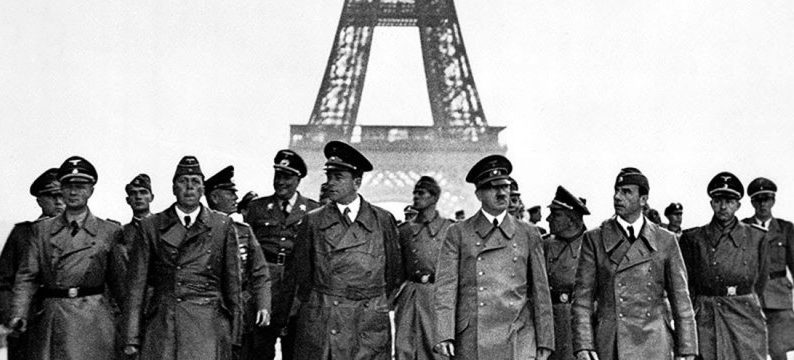German resistant groups WW2

There were German resistance groups in opposition against The Third Reich, how they weren’t in the same vein as the more centralised resistance groups scattered throughout Europe.
The most prominent pre-war group was the circle of political resisters that formed within the German Intelligence network, the Abwehr. The main nucleus formed around Colonel Hans Oster,  who was covered by Admiral Wilhelm Canaris.
who was covered by Admiral Wilhelm Canaris. This group were responsible for numerous false intelligence reports which led to faulty strategic decisions and were one of the main factions behind the July 1944 plot of Graf Schenk von Stauffenberg,
This group were responsible for numerous false intelligence reports which led to faulty strategic decisions and were one of the main factions behind the July 1944 plot of Graf Schenk von Stauffenberg, which was intended to lead to a Coup.
which was intended to lead to a Coup.
Another prominent political dissident group was the Kreisau Circle. This was made up of some high profile names such as Helmuth James von Moltke (great grandson of Field Marshal Moltke)  , the Prussian Finance Minister Johannes Popitz
, the Prussian Finance Minister Johannes Popitz  and Count Gottfried von Bismarck-Schönhausen
and Count Gottfried von Bismarck-Schönhausen  . This group was the most organised of any German resistance groups, they contacted various other groups and fed a lot of information to the UK. However Moltke was arrest in early 1944 and soon the group started to fracture, some wanted to continuing passive resistance, while others wanted to take a more active role. By July 1944 the group was practically none existent.
. This group was the most organised of any German resistance groups, they contacted various other groups and fed a lot of information to the UK. However Moltke was arrest in early 1944 and soon the group started to fracture, some wanted to continuing passive resistance, while others wanted to take a more active role. By July 1944 the group was practically none existent.
Red Orchestra was another big German resistance movement. Made up of Communists in Germany  and led by an Intelligence officer of the Reich Air Ministry, this group mainly collected intelligence for the USSR, as well as spreading anti-Reich propaganda. In 1942 this group was betrayed by a former members and the key members were arrested and executed.
and led by an Intelligence officer of the Reich Air Ministry, this group mainly collected intelligence for the USSR, as well as spreading anti-Reich propaganda. In 1942 this group was betrayed by a former members and the key members were arrested and executed.
Elisabeth Schumacher, born Hohenemser, (April 28, 1904 — December 22, 1942)  was an artist and resistance fighter during the Third Reich. She belonged to the Red Orchestra (Rote Kapelle) resistance group.
was an artist and resistance fighter during the Third Reich. She belonged to the Red Orchestra (Rote Kapelle) resistance group.
In 1942, after a wireless message was decoded, many members of the Red Orchestra were arrested. On 12 September of that year, Schumacher was arrested at her flat. Like her husband, she was sentenced to death on 19 December 1942 at the Reichskriegsgericht (“Reich Military Tribunal”) for “conspiracy to commit high treason”, espionage, and other political crimes. Schumacher was beheaded on 22 December 1942 at Plötzensee Prison, forty-five minutes after her husband was hanged there.

Another important group was the Edelweiss Pirates (Edelweißpiraten). They were a loosely organized group of youth in Nazi Germany. They emerged in western Germany out of the German Youth Movement of the late 1930s in response to the strict regimentation of the Hitler Youth. Similar in many ways to the Leipzig Meute, they consisted of young people, mainly between the ages of 14 and 17, who had evaded the Hitler Youth by leaving school (which was allowed at 14) and were also young enough to avoid military conscription, which was only compulsory from the age of 17 onward.

The Leipzig Meuten, (die Meuten meaning ‘packs’ in Germany) were anti Nazi gangs of children, teenagers and young adults based in Leipzig during the Nazi period of Germany, who aimed to destroy Nazi Control. They were similar to the Edelweiss Pirates, but more politically driven. Members came from working class families and borrowed from socialist and communist traditions. Between 1937 and 1939, die Meuten in Leipzig had, according to the Gestapo, an estimated 1500 members. They were dealt with ruthlessly by the Nazis. There is a permanent exhibition commemorating them at the Leipzig School Museum.


The Ehrenfeld Group (sometimes called the Steinbrück Group) was an anti-Nazi resistance group, active in the summer and autumn of 1944.
The group, which consisted of over one hundred people, centered on Hans Steinbrück, an escaped concentration camp prisoner. Its members included young people, including teens active in the local Edelweiss Pirates group, escaped detainees from forced labor camps, and Jews.
By October 15, they had had made 63 arrests, including 19 teenagers. Of those, thirteen German males, including several teenagers, were executed without trial in a public hanging next to the Ehrenfeld train station in Cologne, on November 10, 1944.










Leave a Reply